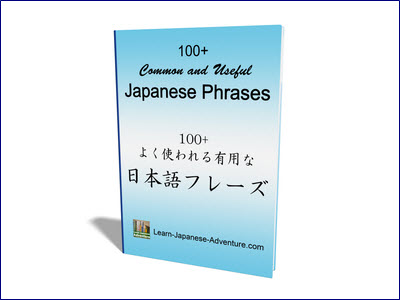- Home
- Basic Lessons
- Japanese Nouns Part 2
Japanese Nouns Part 2 -
Free Japanese Lessons: 3
This second part of Japanese nouns will cover another feature of nouns in Japanese.
In Part 1, you learned to form simple sentences, namely questions and statements, using only nouns and several basic particles e.g. は (wa), も (mo) and か (ka).
Here you will learn to use one noun to modify another noun using the particle の (no). There are several meanings to this, depending on the context.
First, let's take a look at the following model:
NounA の NounB
NounA no NounB
Note: NounA is modifying NounB, and の (no) is used as a particle to connect the two Japanese nouns.
There are five meanings when using this model:
- Possessor
- Content
- Belonging
- Location
- Nature/Attribution
1. Possessor
In this case the subject NounA possesses the object NounB. For example,
- トムさんのとけい
to mu san no to kei
Meaning: Tom's watch
- わたしのかさ
wa ta shi no ka sa
Meaning: My umbrella
2. Content
In this case, NounA explains what NounB is about. It tells us the content of NounB.
- りょうりのほん
ryou ri no hon
Meaning: Book on cookery (cookbook)
- にほんごのきょうかしょ
ni hon go no kyou ka sho
Meaning: Japanese language textbook
3. Belonging
In this situation, NounA is an organization, company or a particular group to which NounB belongs.
- American School (NounA) のせんせい (NounB)
American School no sen sei
Meaning: American School's teacher
- Sony (NounA) のかいしゃいん (NounB)
Sony no ka i sha in
Meaning: A Sony office worker
4. Location
In this case, NounB gives the more exact location in relation to the place given by NounA.
- つくえ (NounA) のうえ (NounB)
tsu ku e no u e
Meaning: On top of the desk
- へや (NounA) のなか (NounB)
he ya no na ka
Meaning: Inside the room
- ビル (NounA) のみぎ (NounB)
bi ru no mi gi
Meaning: Right-hand side of the building
5. Nature/Attribution
In this last case, NounA describes the gender and nationality of person NounB.
- おんな (NounA) のせんせい (NounB)
on na no sen sei
Meaning: Female teacher
- かんこくじん (NounA) のがくせい (NounB)
kan koku jin no ga ku sei
Meaning: Korean student
Related Pages
Lesson 2: Nouns - Make simple sentences using Nouns.
Lesson 13: Nouns Part 3 - Action before and after Noun.
Lesson 27: Noun Modifier.
Best Deal of the Year! Get 68% OFF Lifetime Premium! Ends on 13 Dec 2025
Click Here to Get 68% OFF Lifetime Premium and be on the fast track to fluency in Japanese.
The link above is an affiliate link, which means that I would earn a commission (at no extra cost to you) if you do end up purchasing the related learning course.
Previous - Lesson 2: Nouns
Next - Lesson 4: Japanese Demonstrative Pronouns & Adjectives
Buy me a coffee









Facebook Comments
Don’t see the comments box? Log in to your Facebook account, give Facebook consent, then return to this page and refresh it.